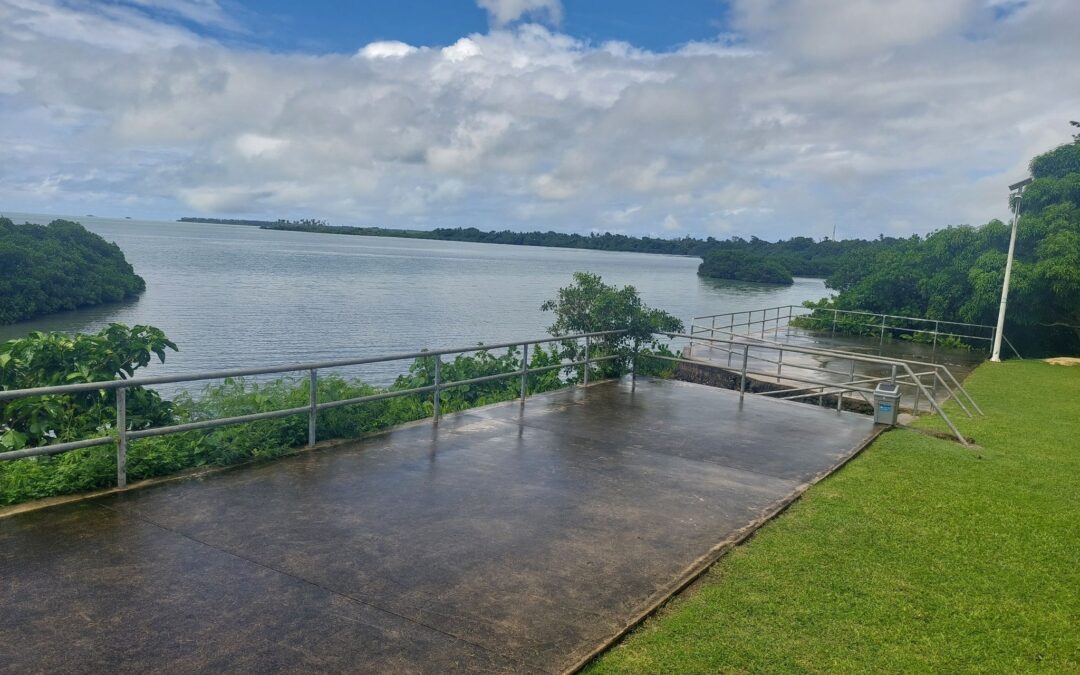- The Ha’amonga ‘a Maui Trilithon: As mentioned earlier, these three large stones are believed to have been erected around 1200 AD as a navigational aid. The trilithon consists of two upright stones and a third, larger stone laid horizontally on top of them. It is one of the most significant examples of prehistoric stonework in the Pacific.
- The Tongan Royal Tombs: The burial site of Tongan kings and queens is located nearby. The tombs are an important cultural and historical site in Tonga.
- The Eastern Shore Beaches: The area around Captain Cook’s Landing Place is home to several beautiful beaches, including the popular Ha’atafu Beach.
Captain Cook’s Landing Place is a historic site located on the island of Tongatapu in Tonga. It is a significant location because it marks the spot where the famous explorer Captain James Cook first set foot on the island of Tonga in 1777.
The site is situated on the eastern coast of Tongatapu, near the village of Mu’a. It is marked by a monument that was erected in 1969 to commemorate Cook’s landing. The monument consists of a stone pillar with a plaque that describes the historical significance of the site.
Captain Cook’s Landing Place is also known as the “Ha’amonga ‘a Maui Trilithon”, which is a set of three large stones that were erected around 1200 AD. These stones are believed to have been used as a navigational aid by Polynesian sailors, and they are considered to be one of the most significant examples of prehistoric stonework in the Pacific.
The landing place is a popular destination for tourists visiting Tonga. Visitors can explore the monument and the surrounding area, which includes a beautiful beach and several nearby villages. There are also several tours available that provide more information about the history and significance of the site.
Overall, Captain Cook’s Landing Place is a fascinating historical site that offers visitors a glimpse into Tonga’s rich cultural and maritime history. Its connection to Captain Cook and the Polynesian sailors who used the Ha’amonga ‘a Maui Trilithon as a navigational aid make it a must-see destination for anyone interested in Pacific history and culture.
Captain James Cook arrived in Tonga on his third Pacific voyage in 1777. He was searching for the southern continent and was the first European to visit Tonga. When he arrived at Tongatapu, he was greeted by locals who were friendly and welcoming. Cook and his crew spent several weeks in Tonga, during which time they explored the island and made contact with the locals.
According to historical records, Cook landed at a place called ‘Atele, which is located near the village of Mu’a on the eastern coast of Tongatapu. He named the island group the “Friendly Islands” due to the warm reception he and his crew received from the locals. This name is still used today to refer to the Kingdom of Tonga.
The monument at Captain Cook’s Landing Place was built by the Tongan government in 1969 to commemorate the 192nd anniversary of Cook’s landing. It is made of coral limestone and stands about 12 meters tall. The plaque on the monument reads:
“In memory of the visit of the great English navigator Captain James Cook to this place on 2 October 1777. This plaque was erected by the government of Tonga on the occasion of the 192nd anniversary of his visit, 2 October 1969.”
In addition to the monument, there are several other points of interest at Captain Cook’s Landing Place. These include:

